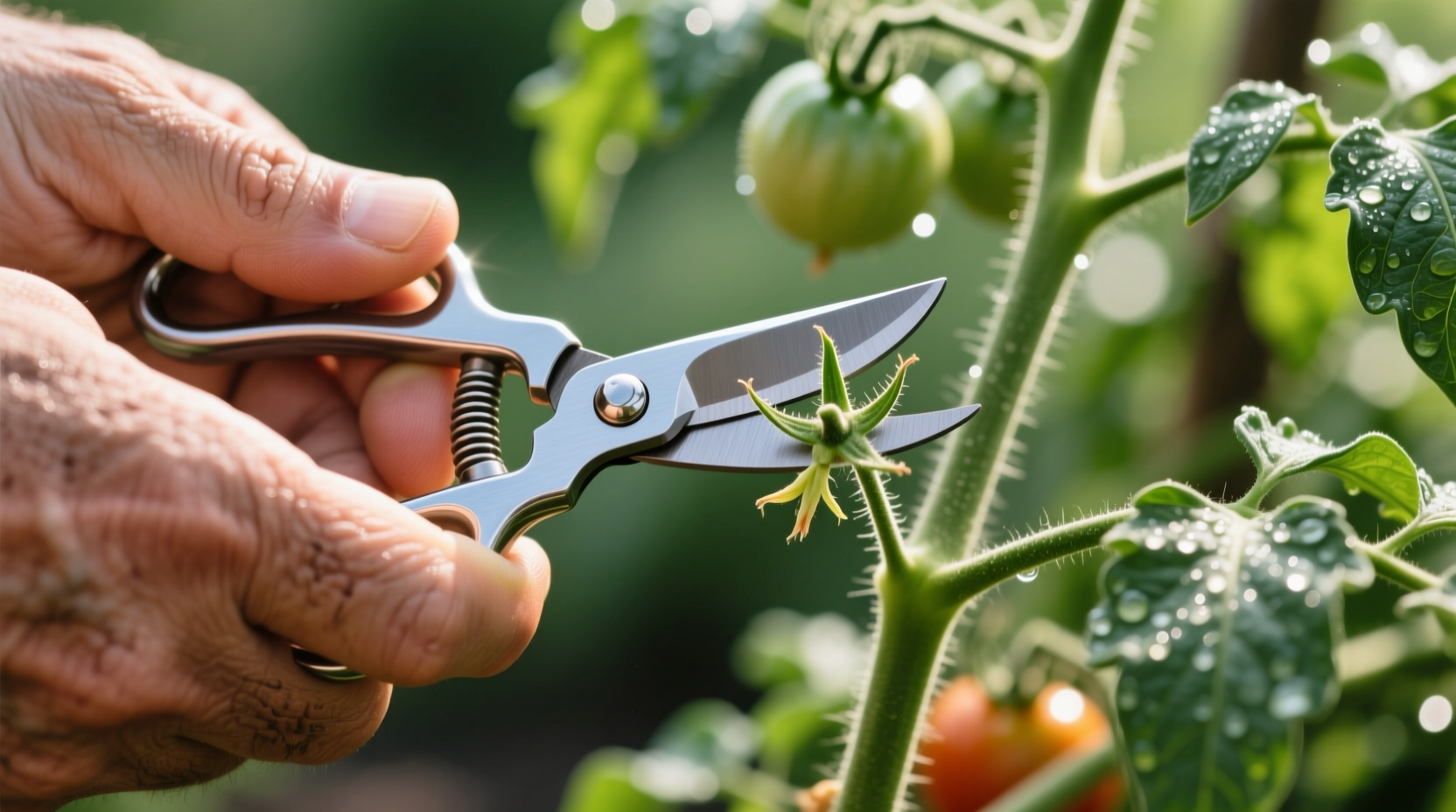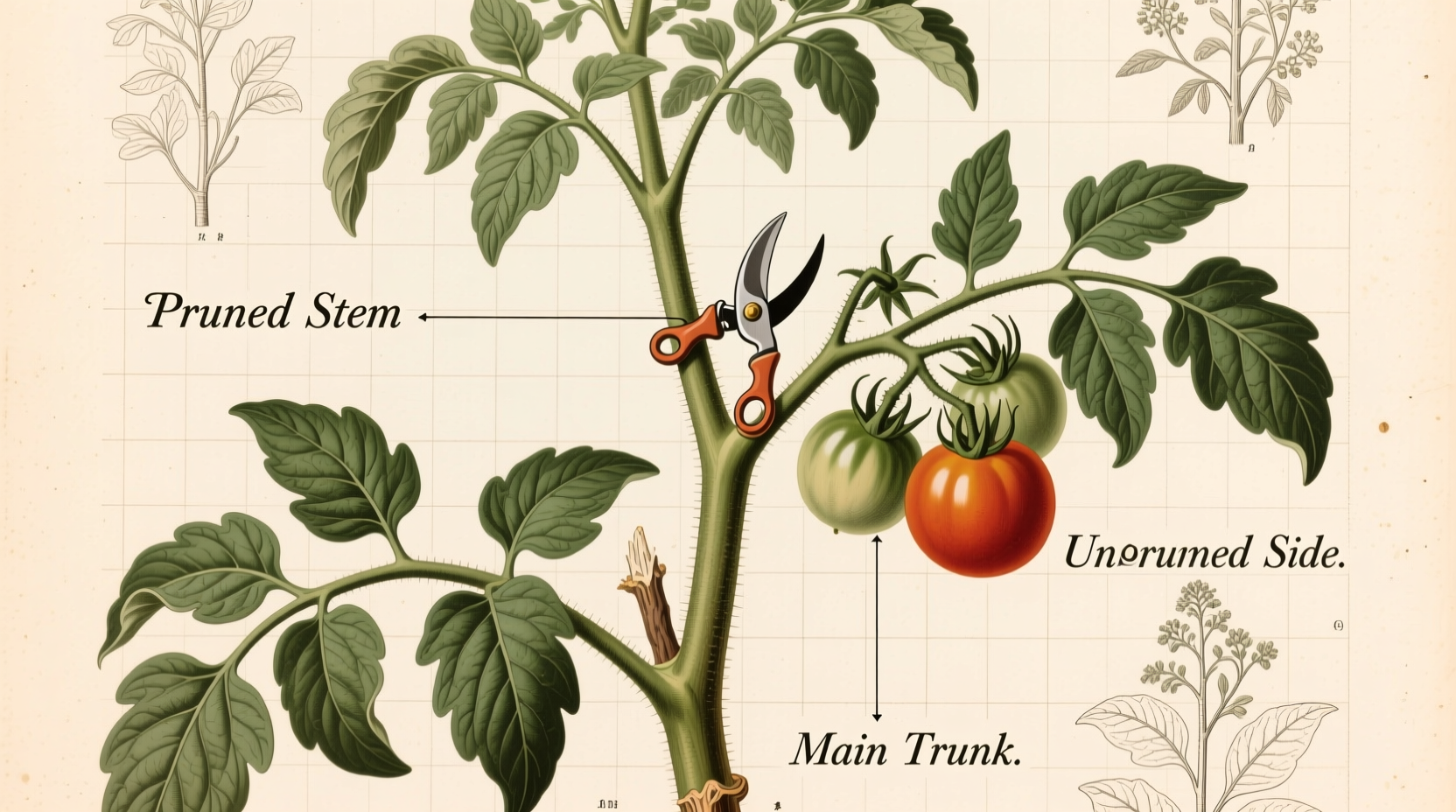Yes, most tomato plants benefit from strategic pruning, but the approach varies significantly by variety. Indeterminate tomatoes require regular pruning to maximize yield and prevent disease, while determinate varieties need minimal to no pruning. Proper pruning can increase fruit size by 20-30% and reduce common diseases like blight by improving air circulation.
Tomato pruning remains one of the most debated practices among home gardeners and horticulturists. Understanding whether and how to prune your specific tomato varieties can mean the difference between a bountiful harvest and disappointing results. Let's cut through the confusion with science-backed guidance that works for your garden.
Why Pruning Matters for Tomato Plants
Pruning isn't just about tidiness—it directly impacts your harvest quality and plant health. Research from Cornell University Cooperative Extension shows properly pruned indeterminate tomatoes produce larger, earlier-ripening fruit with significantly reduced disease pressure. The key benefits include:
- Improved air circulation that reduces fungal diseases like early blight by up to 40%
- Increased sunlight exposure to developing fruit for better color and sugar development
- Redirected plant energy from excessive foliage to fruit production
- Earlier harvests by focusing the plant's resources on fewer, higher-quality fruits
However, over-pruning can stress plants and reduce overall yield. The University of California Agriculture and Natural Resources warns that removing more than 20% of foliage at once creates sunscald risk and increases water stress.

Determinate vs. Indeterminate: The Critical Distinction
Understanding your tomato variety's growth habit determines your pruning strategy. This distinction affects everything from your pruning schedule to expected harvest timing.
| Characteristic | Determinate Tomatoes | Indeterminate Tomatoes |
|---|---|---|
| Growth Pattern | Bush-type, stops growing at 3-4 feet | Vining, continues growing until frost |
| Pruning Needs | Minimal (only remove diseased leaves) | Regular pruning required |
| Harvest Period | Concentrated 2-3 week harvest | Continuous harvest until frost |
| Common Varieties | Roma, Celebrity, Bush Early Girl | Beefsteak, Cherokee Purple, Sungold |
| Pruning Impact on Yield | Reduces overall production | Increases fruit size by 20-30% |
When to Prune Your Tomato Plants
Timing affects your success more than technique. Follow this seasonal timeline for optimal results:
- Early Season (First 2-3 weeks after transplanting): Focus on establishing strong roots—avoid pruning during this critical establishment phase
- Mid-Season (When first flowers appear): Begin removing suckers on indeterminate varieties, targeting those below the first flower cluster
- Peak Season (Throughout fruit development): Maintain 1-2 main stems by removing new suckers weekly
- Late Season (4-6 weeks before first frost): Top indeterminate plants to direct energy to ripening existing fruit
The USDA National Institute of Food and Agriculture notes that pruning during extreme heat (above 90°F/32°C) stresses plants and increases disease susceptibility. Morning pruning during cooler temperatures yields the best results.
Step-by-Step Pruning Technique
Follow this professional approach for clean, effective pruning that minimizes disease transmission:
- Sanitize pruning shears with 70% isopropyl alcohol before starting
- Identify suckers (the shoots growing between main stem and branches)
- For small suckers (under 3 inches), pinch off with thumb and forefinger
- For larger suckers, use clean shears to make a 45-degree cut close to main stem
- Remove no more than 20% of total foliage in a single session
- Dispose of pruned material away from garden beds
- Water at soil level after pruning to avoid wetting new wounds
Never prune when plants are wet—this spreads diseases like bacterial spot. The University of Florida Extension recommends waiting at least 24 hours after rain or heavy watering before pruning.
Common Pruning Mistakes to Avoid
Even well-intentioned gardeners make these critical errors that can damage plants:
- Over-pruning determinate varieties—these bush types need their foliage to support their single harvest cycle
- Pruning too aggressively—removing more than one-third of foliage stresses plants and reduces photosynthesis
- Pruning during wet conditions—spreads fungal and bacterial diseases through open wounds
- Using dirty tools—transfers pathogens between plants (sanitize between each plant)
- Pruning late in the season—reduces the plant's ability to ripen existing fruit before frost
Context matters significantly—container-grown tomatoes often require more aggressive pruning than in-ground plants due to limited root space. Similarly, plants in humid climates need more frequent pruning for disease prevention than those in arid regions.
Special Considerations for Different Growing Environments
Your specific garden conditions affect pruning decisions:
- Container gardening: Limit indeterminate varieties to one main stem for best results in pots
- Cold climates: Prune more aggressively to accelerate ripening in short seasons
- Humid regions: Increase pruning frequency to combat fungal diseases (every 7-10 days)
- Dry climates: Reduce pruning to maintain foliage that protects fruit from sunscald
- Greenhouse growing: Maintain strict pruning schedule as humidity increases disease risk
Research from the Cornell University Vegetable Program shows that in high-tunnel production systems, pruning to two main stems increases marketable yield by 25% compared to unpruned plants, while single-stem pruning works best in container systems.
When Not to Prune Tomato Plants
Pruning isn't always beneficial. Avoid pruning in these situations:
- Determinate tomato varieties at any growth stage
- Plants showing signs of stress (wilting, nutrient deficiency)
- During extreme heat waves (above 90°F/32°C)
- When plants are wet from rain or irrigation
- Less than 4 weeks before expected harvest completion
For heirloom varieties with naturally sprawling growth habits, selective pruning works better than strict single-stem training. The University of California Master Gardeners program recommends maintaining 2-3 main stems for most heirloom types to balance yield and plant health.
Tools and Timing for Success
Using the right tools at the optimal time makes all the difference:
- Pruning shears: Bypass pruners (not anvil type) for clean cuts that heal faster
- Timing: Early morning when plants are hydrated but before heat builds
- Frequency: Weekly inspections for indeterminate varieties during peak season
- Disinfection: Alcohol wipe between plants to prevent disease transmission
- Hand protection: Lightweight gloves to prevent skin irritation from tomato foliage
Professional growers using these techniques report 15-20% higher yields of premium-grade fruit compared to unpruned control groups, according to data from the USDA Agricultural Research Service.











 浙公网安备
33010002000092号
浙公网安备
33010002000092号 浙B2-20120091-4
浙B2-20120091-4